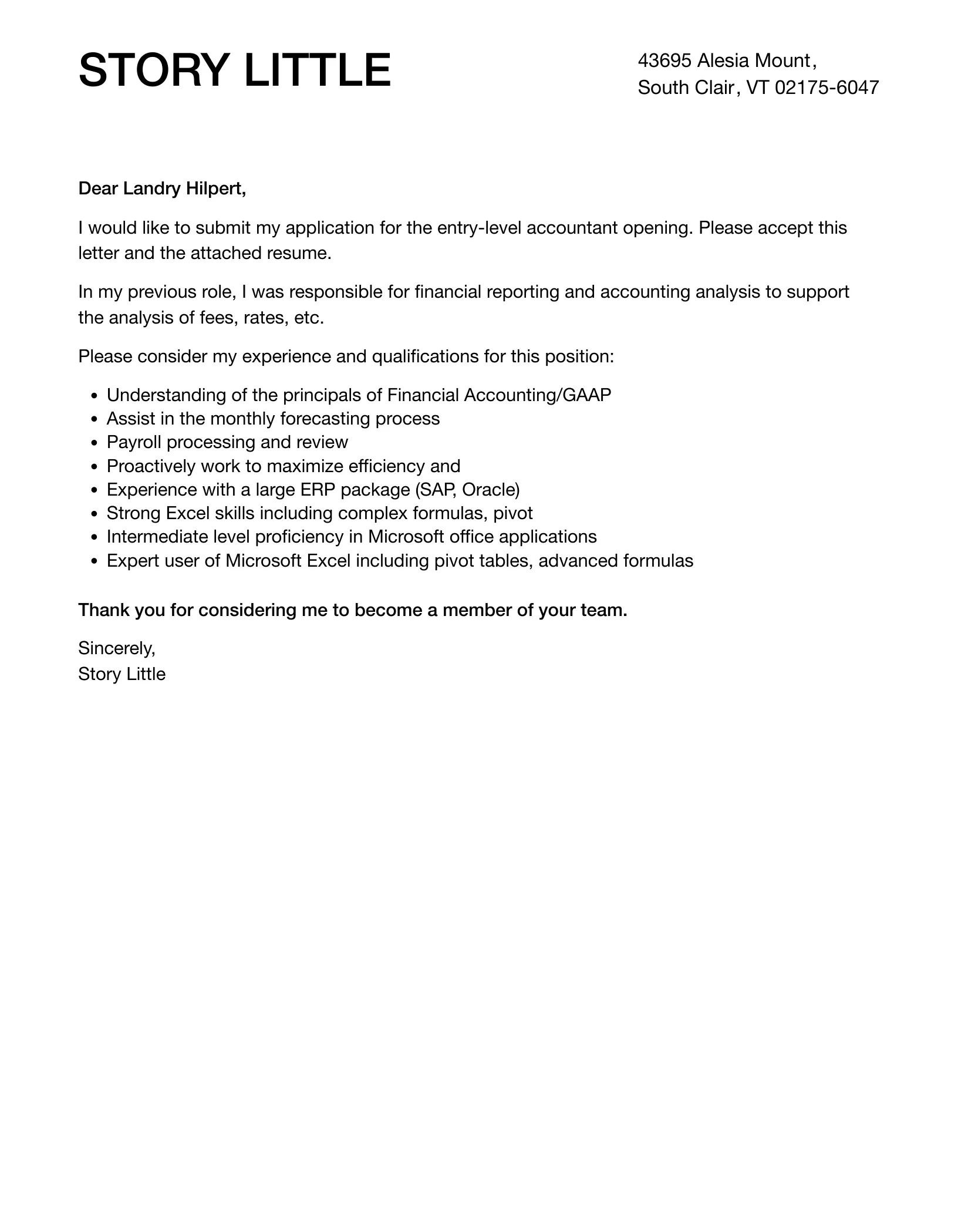Understanding the Purpose of an Accounting Entry-Level Cover Letter
An accounting entry-level cover letter serves as your introduction to a potential employer. It’s your opportunity to showcase your personality, passion for accounting, and the unique value you bring to the table, beyond what’s listed on your resume. Unlike a resume, which is a factual overview of your skills and experience, the cover letter lets you explain why you’re a great fit for this specific role and company. It’s a chance to highlight your enthusiasm and connect with the hiring manager on a more personal level, increasing your chances of landing an interview. A well-crafted cover letter is crucial for making a strong first impression and setting yourself apart from other candidates vying for the same position.
Key Components of a Winning Cover Letter
A winning accounting entry-level cover letter is meticulously structured and contains essential components that convey professionalism and clarity. Each part plays a vital role in presenting you as a strong candidate. Pay attention to details; a well-organized cover letter shows your organizational skills which is crucial for any accounting role. From the contact information to the closing salutation, every element must be correct and well-formatted.
Your Contact Information
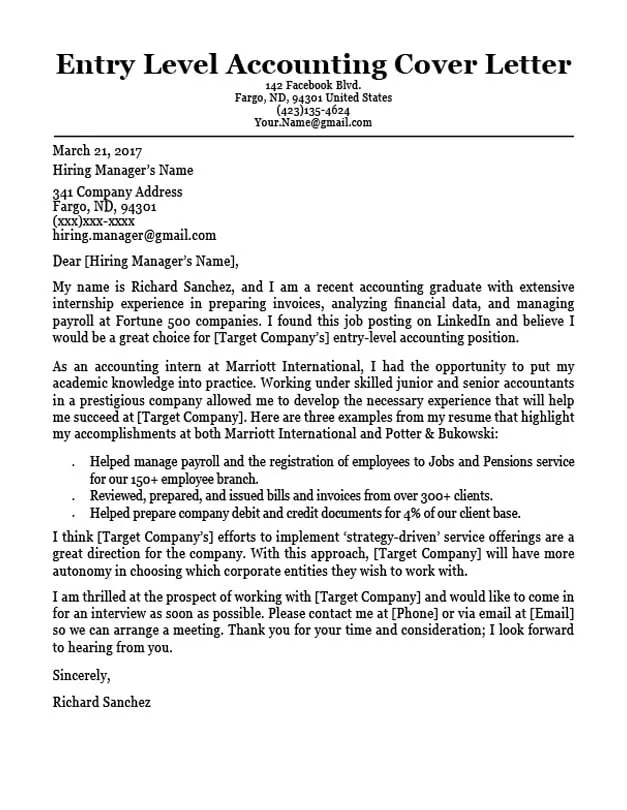
At the top of your cover letter, include your full name, address, phone number, and email address. This makes it easy for the recruiter to contact you. Ensure your email address is professional; avoid using nicknames or casual handles. Use a professional font like Times New Roman or Arial, and maintain consistency throughout the document.
Date
Below your contact information, write the current date. This helps the employer know when the letter was written and shows that you’re up-to-date with your job search. Use a standard date format, such as Month Day, Year, to maintain professionalism.
Recipient’s Information
Address the letter to the hiring manager or the specific person listed in the job posting. If you can’t find a name, use ‘Dear Hiring Manager’ instead of a generic greeting. Addressing the letter to a specific person shows you’ve done your research and that you pay attention to detail, which is very important for accounting roles.
The Salutation
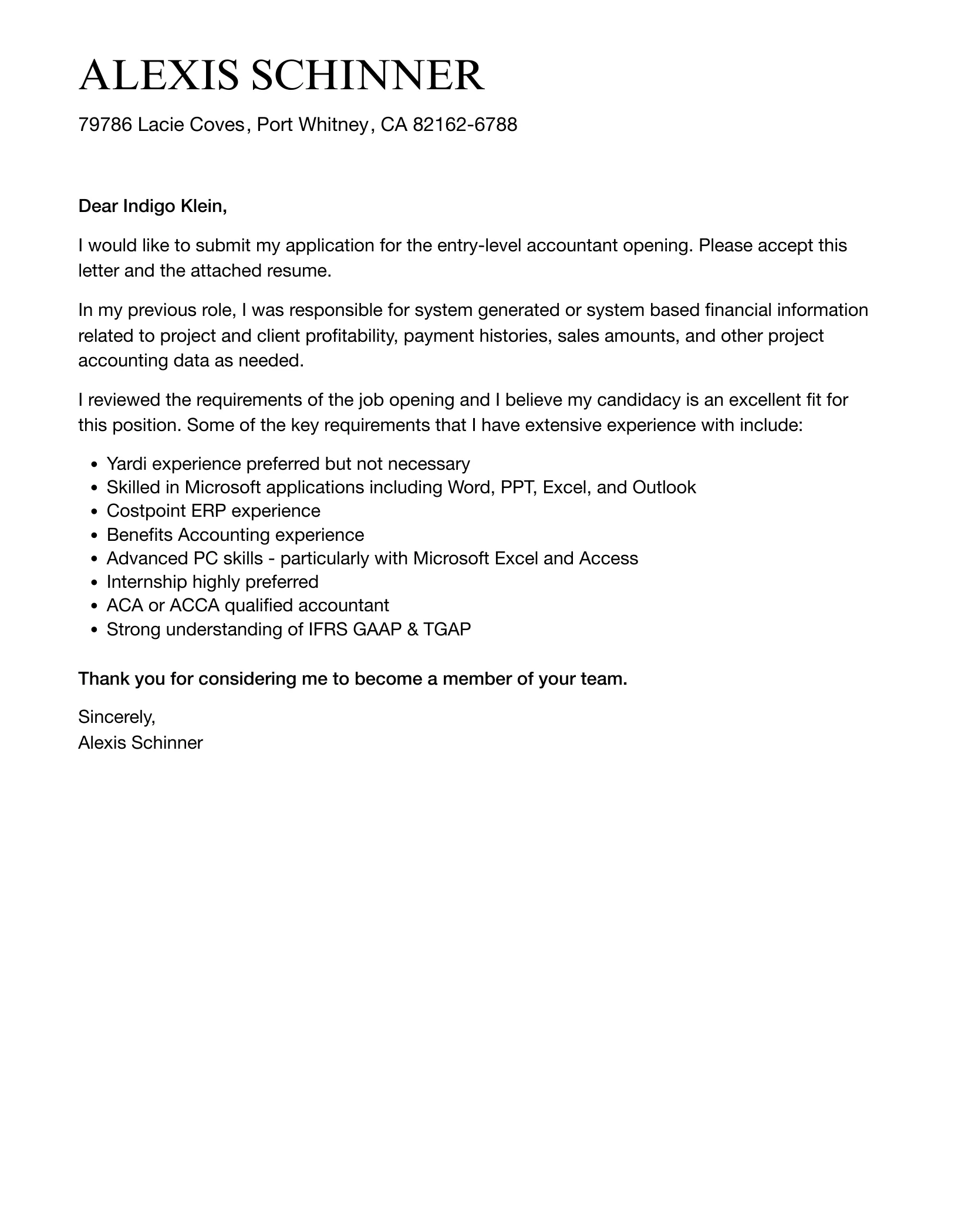
Start your letter with a formal salutation, such as ‘Dear Mr./Ms./Mx. [Last Name]’ or ‘Dear Hiring Manager,’ followed by a comma. Avoid informal greetings; keep your tone professional and respectful. This sets the tone for the rest of your cover letter and demonstrates your professionalism. Pay attention to the recipient’s name and use the correct title.
Highlighting Your Skills and Qualifications
The body of your cover letter is where you highlight your skills and qualifications. Make sure your qualifications align with the job description. Focus on relevant aspects and show enthusiasm for the position. This section is your opportunity to explain why you’re a great fit. Use specific examples to show your capabilities. You should demonstrate your knowledge and enthusiasm for accounting through your writing.
Education and Certifications
Mention your educational background, including the name of your institution, degree earned, and graduation date. If you’re still in school, state your expected graduation date. Highlight any relevant certifications, such as a Certified Public Accountant (CPA) or Certified Management Accountant (CMA) certification, or any certifications that are in progress. This information is crucial in demonstrating your formal qualifications and commitment to the field.
Relevant Coursework
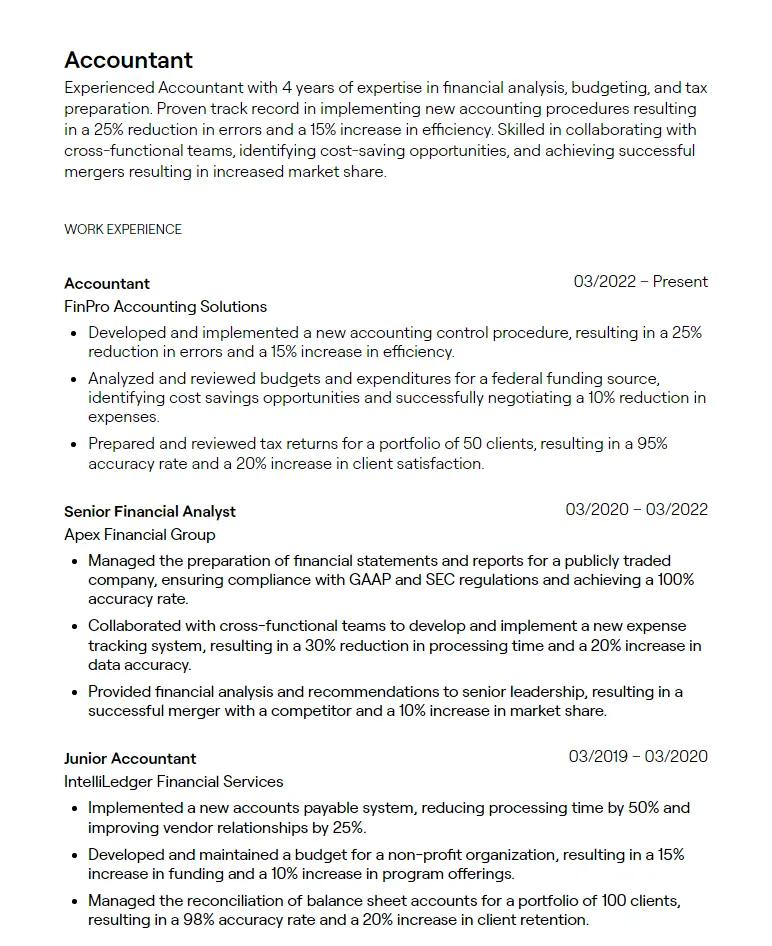
Briefly list relevant coursework, such as financial accounting, auditing, taxation, or cost accounting. This helps demonstrate that you have the necessary knowledge base to succeed in the role. Tailor this section to match the requirements outlined in the job description. This provides the employer with concrete examples of your skills.
Software Proficiency
List any accounting software you are proficient in, such as QuickBooks, Xero, SAP, or Microsoft Excel. Mention your proficiency level for each software. Software knowledge is important for many accounting jobs, so it’s crucial to mention those skills. This demonstrates that you possess the practical skills required to perform daily accounting tasks.
Previous Experience
Briefly describe any previous accounting-related experience, even if it’s an internship or part-time job. Detail your responsibilities and accomplishments. Quantify your achievements whenever possible, using numbers to show your impact. This section should highlight your work ethic and ability to learn. This is crucial for showing practical experience and skills gained in the workplace.
Internships and Volunteer Work
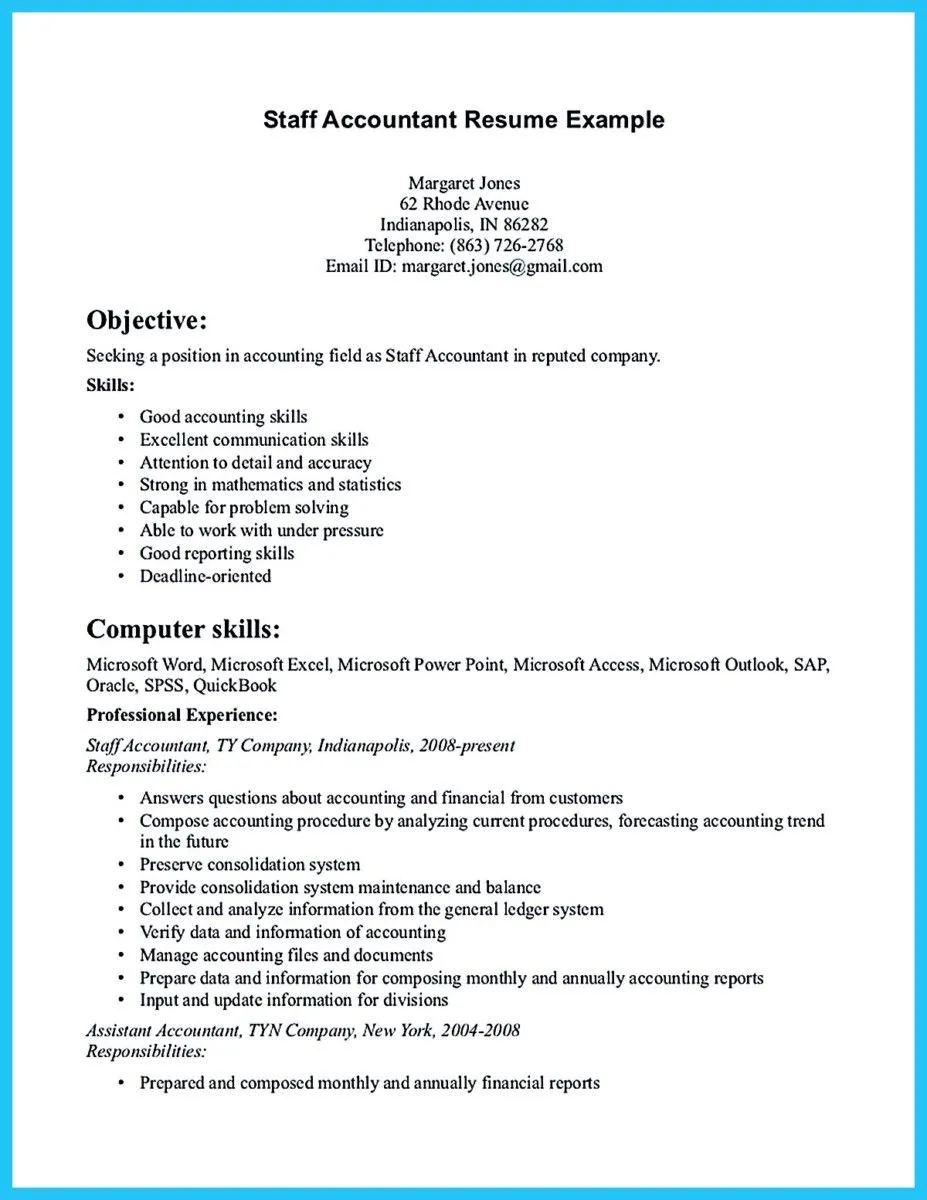
If you have internship or volunteer experience, highlight it here. Describe your role, responsibilities, and the skills you developed. Even unpaid experience can demonstrate your dedication and willingness to learn. Focus on experiences that provided you with relevant accounting skills.
Projects and Achievements
If you have completed any relevant projects, such as financial analysis reports or tax returns, briefly describe them. Highlight any achievements or awards you received. This section can showcase your analytical abilities and problem-solving skills, which are essential in accounting. This provides additional examples of your abilities and strengthens your application.
Tailoring Your Cover Letter
Customize each cover letter for the specific job and company. This shows that you are genuinely interested in the role and have taken the time to understand the requirements. Customization makes your application stand out and increases your chances of getting an interview.
Researching the Company
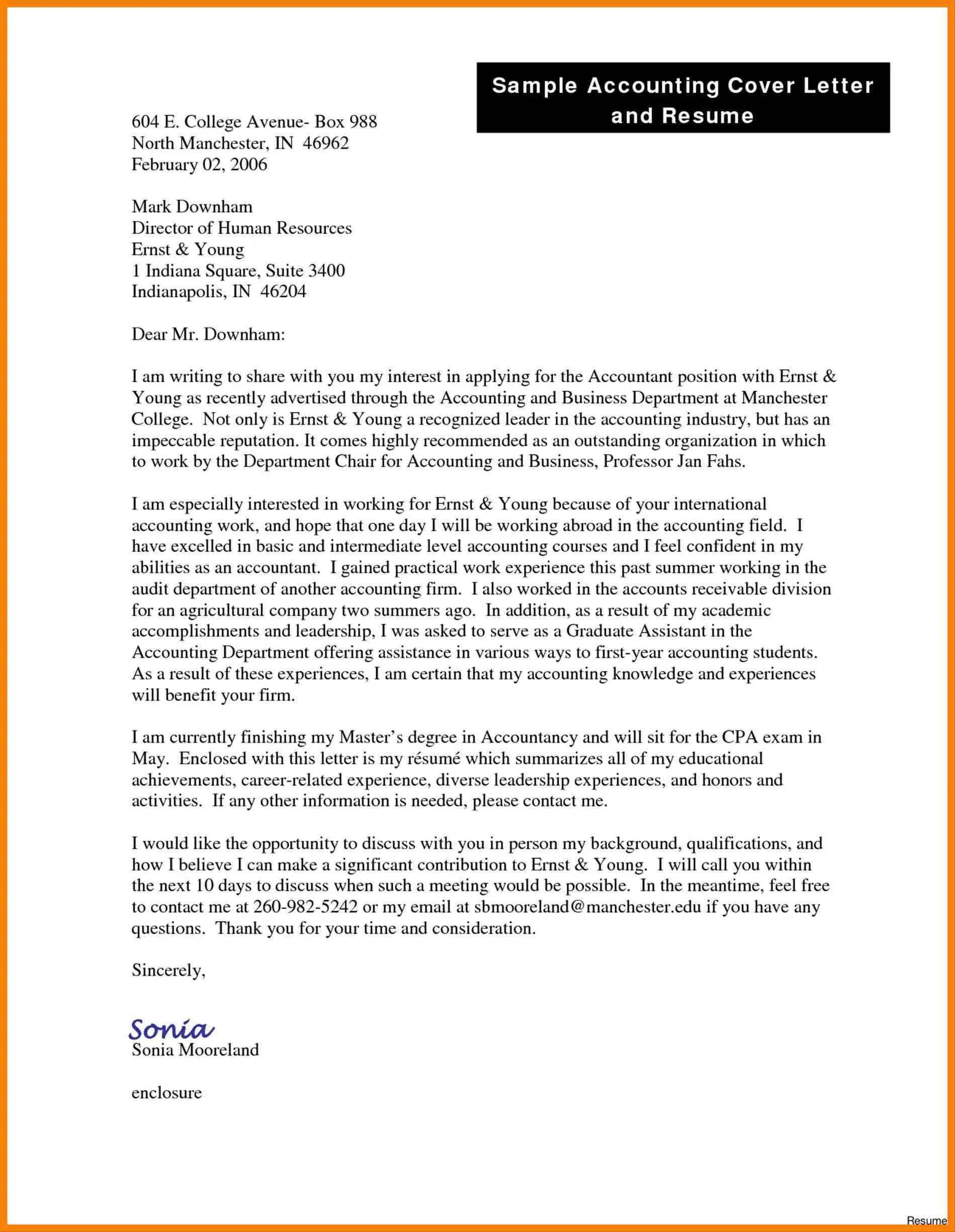
Before writing your cover letter, research the company’s mission, values, and recent activities. This information helps you align your skills and experiences with their needs. Mention the company’s name and specific aspects of its work that appeal to you, showing that you’re genuinely interested. This research can help you align your skills.
Matching Skills to Job Requirements
Carefully read the job description and identify the key skills and qualifications the employer is looking for. Then, in your cover letter, highlight the skills and experiences that match those requirements. Use the same keywords from the job description. This matching process shows that you understand the role. Tailor your cover letter to the specific requirements.
Using Keywords Effectively
Incorporate relevant keywords from the job description throughout your cover letter. This helps your application get noticed by Applicant Tracking Systems (ATS) and hiring managers. Make sure you use these keywords naturally and in context. The effective use of keywords is a critical aspect of getting noticed by employers.
Formatting and Presentation
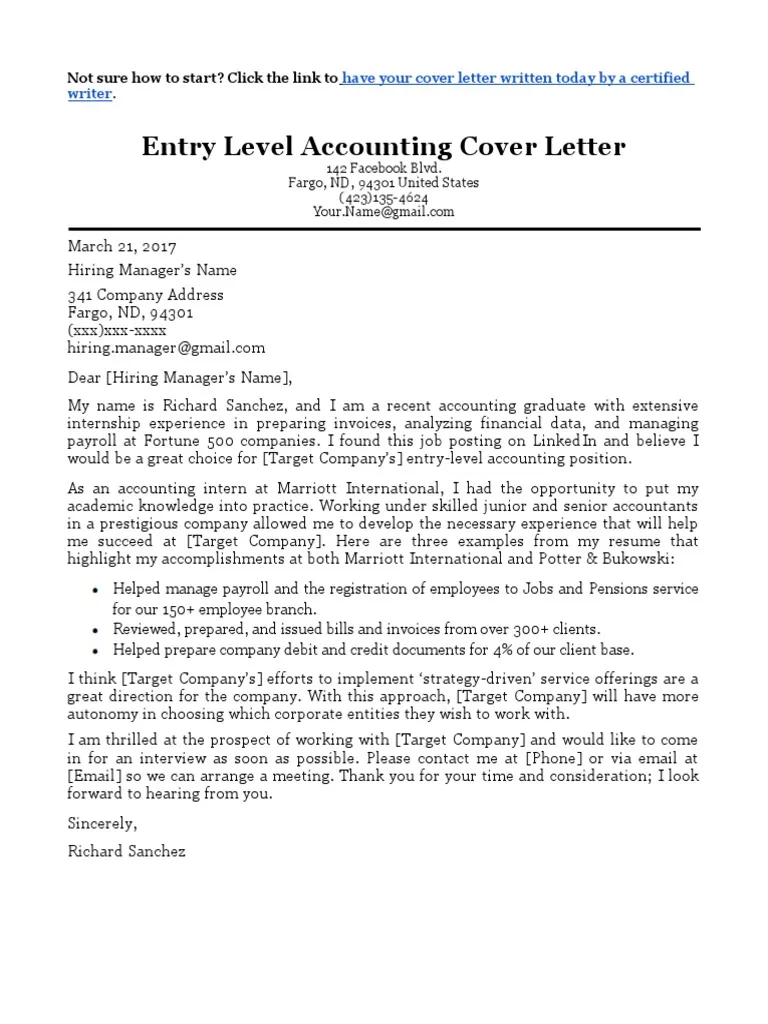
Your cover letter should be well-formatted, easy to read, and visually appealing. Proper formatting makes a strong first impression and demonstrates professionalism and attention to detail. Ensure that your document looks polished and is easy to navigate. Good formatting shows you are organized.
Font and Style
Use a professional and readable font, such as Times New Roman, Arial, or Calibri. Keep the font size between 11 and 12 points. Use consistent formatting throughout the document for headings, subheadings, and body text. Consistency enhances readability and improves the overall presentation. Choose a font that is easy to read and looks professional. Avoid unusual or decorative fonts.
Length and Structure
Keep your cover letter concise and to the point, ideally no more than one page. Use clear paragraphs, and separate each section with headings and subheadings. A well-structured cover letter is easier to read and more appealing to the hiring manager. Maintain a clear, organized structure to make your application easy to follow.
Proofreading and Editing
Thoroughly proofread your cover letter for any grammatical errors, spelling mistakes, or typos. These errors can undermine your credibility. Use spell-check and grammar-check tools, but also read the document carefully yourself. Ask a friend or career counselor to review your cover letter before submitting it. Proofreading is a critical step in ensuring that your application is professional and error-free.
The Closing
The closing section of your cover letter is where you express your interest in the role and provide a call to action. A strong closing leaves a lasting impression and encourages the employer to contact you for an interview.
Expressing Interest and Enthusiasm
Reiterate your interest in the position and the company. Show your enthusiasm and passion for accounting. Briefly mention why you believe you’re a good fit for the role. This demonstrates your commitment to the opportunity. Show your enthusiasm.
Call to Action
Include a call to action, such as ‘I am eager to discuss my qualifications further in an interview’ or ‘Thank you for considering my application; I look forward to hearing from you.’ This encourages the employer to take the next step. A clear call to action ensures that the employer knows what you want them to do next.
Closing Salutation
End your cover letter with a professional closing salutation, such as ‘Sincerely,’ ‘Best regards,’ or ‘Yours sincerely,’ followed by a comma. Leave space for your signature, and then type your full name. The closing salutation concludes the formal tone of your cover letter. Ensure your closing matches the tone you set in your greeting.
